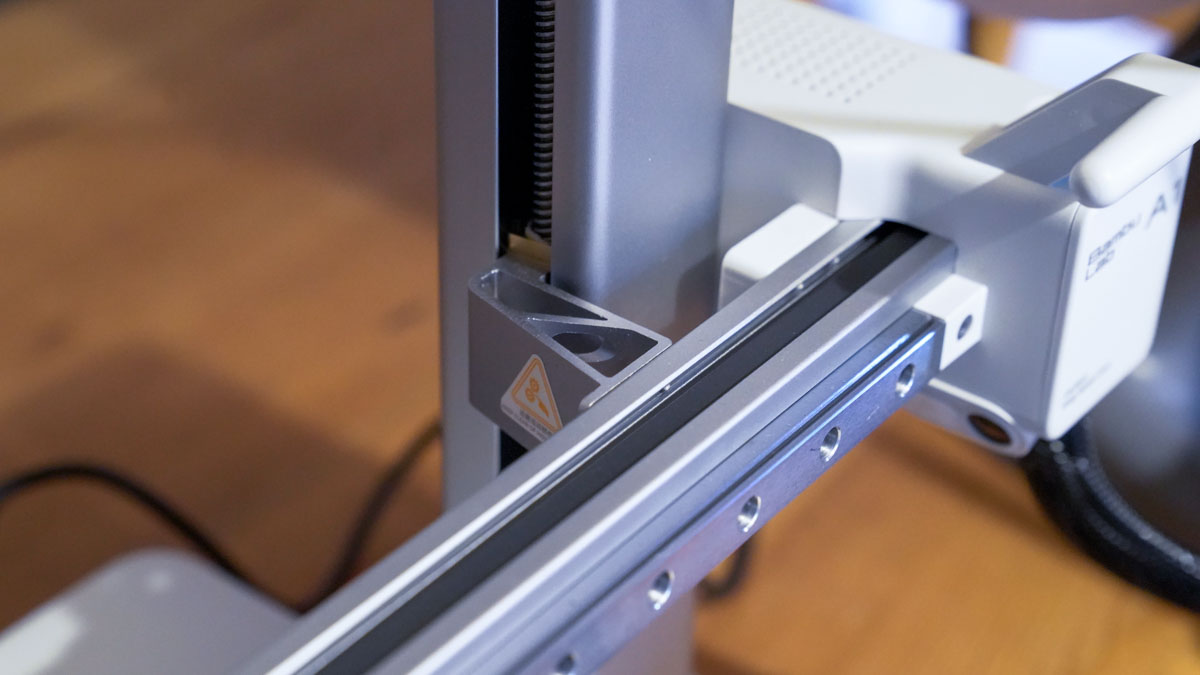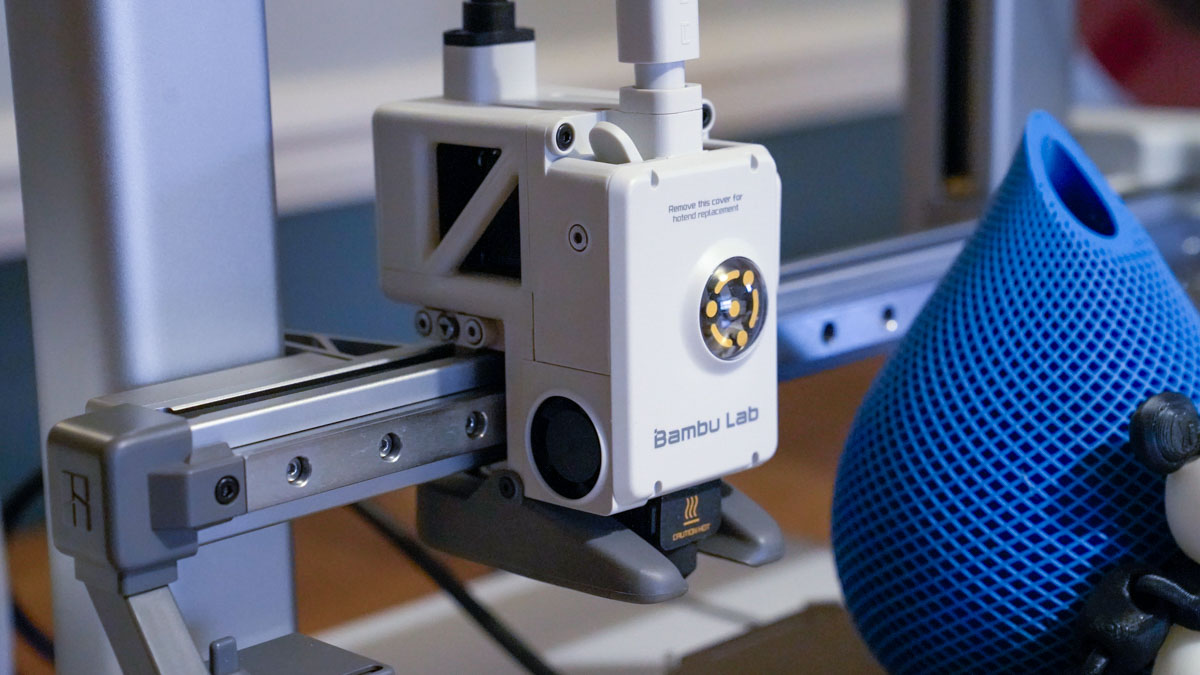
(Image: techradar)
The Bambu Labs A1 is a big step up from the smaller A1 Mini. It will have a big impact on the 3D printing world because it is fast, can use many different materials, and is cheap. It has a great build quality and lots of advanced features that suit lots of different users, from beginners to professionals.
Pros
-
Ultra-fast printing
-
Multi-filament versatility
-
Exceptional build quality
Cons
-
Complex software
-
No enclosure
-
80ºC heated platform limit
Bambu Labs has become known for shaking up the 3D printing industry. Their Core XY machines were very fast and accurate. If that wasn’t enough, the AMS multi-filament system made the machines even better.
Recently, we tried something a bit different by reviewing the Bambu Labs A1 Mini, one of best 3d printer that we think. It was very fast and accurate, and only the recent updates to the excellent Official Prusa Mini could match it.

The Bambu Labs A1 Mini is now available. You can buy it on its own or as part of a package that includes the AMS Lite. That system takes up a lot of desk space, but it’s nothing compared to some other systems that are coming out. What makes it stand out is how simple it is.
Bambu Labs A1: Design

(Image: techradar)
SPECS
Print Technology: Fused Filament Fabrication (FFF)
Build Area: 256 x 256 x 256 mm³
Dimensions: 386 x 389 x 458 mm
Weight: 9.65 kg
Bed: up to 80ºC
Print Surface: Textured
Software: Bambu Studio (Supports third-party software)
Materials: PLA, ABS, PETG, ASA, etc.
Print Speed: Up to 500 mm/s, with top acceleration at 10000 mm/s²
Bambu Labs has not completely changed the design, but has made some changes, and that is exactly what has happened with the A1. At first glance, the design is similar to other models, with the exception of the sleek LCD touchscreen and the well-designed tool head.
As is now common with these printers, the A1 comes almost completely assembled, so you just need to plug in a few screws and wires and you’re ready to go. The setup process took less than half an hour, and it was very simple. I also liked that the instructions tell you exactly where to put the printer when you’re setting it up. They also give you tips on how to use a table to make it easier to put the vertical part in place.
As you attach the vertical part, you can see some of the construction. But it’s only when you look more closely that you start to see the bamboo in the design. The design includes a horizontal bar with a detailed metal attachment to the vertical bar. The base is a subtle shade of off-white, similar to the colour used on the A1 Mini and AMS Lite models. The design is familiar, but the overall finish looks futuristic.

(Image: techradar)
Even the single filament reel holder and filament run-out sensor look like they’re from the future. Then there’s the slightly unusual AMS Lite design, which has four reels mounted two next to each other. The design is inspired by the reels being clearly labelled. It’s also really easy to print the different parts of the model, as long as you’ve set up the filaments in the software.
Like the A1 Mini, the AMS Lite sits to the side, but you can also mount it upside down using a 3D printed part if you want. If you use more than one filament, it will take up a bit more space on your desk. But it’s worth it for what this printer can do.
One thing about the design. The fast switch nozzles are great because they let you easily replace the nozzles. The system will automatically recognise the new nozzles as soon as you put them in.
The printer looks simple, but if you look closely, you’ll see that it’s better made and has more detail than many printers that cost the same or are slightly cheaper.
Bambu Labs A1: Features
Even the reel for the single filament and the sensor that checks how much filament is left look like they’re from the future. Then there’s the slightly unusual AMS Lite design, which has four reels mounted two next to each other. The design is based on the clear labelling of the reels. It’s also really easy to print the different parts of the model, as long as you’ve set up the filaments in the software.
Like the A1 Mini, the AMS Lite sits to the side, but you can also mount it upside down using a 3D printed part if you want. If you use more than one filament, it will take up a bit more space on your desk. But it’s worth it for what this printer can do.
There’s one thing I want to talk about with the design. The fast switch nozzles are great because they let you easily replace the nozzles. The system will automatically recognise the new nozzles as soon as you put them in.
The printer looks simple, but if you look closely, you’ll see that it’s better made and has more detail than many printers that cost the same or are slightly cheaper.
The A1’s design features all-metal rails and linear bearings for extra rigidity and accuracy, with minimal maintenance needed. Its advanced filament monitoring system does more than just check if the filament is there; it also measures how fast the filament is moving, how much tension there is, and the pressure.
The HMS system can pause prints when it detects problems and help you figure out what is wrong, by giving you suggestions for what might be the problem.
One of the big features is the Quick Swap Hotends, which make it easy to maintain and change the nozzle size. It’s very easy to use, but there’s a lot for a beginner to learn.
Bambu Labs A1: Performance

(Image: techradar)
Bambu Labs A1: Test results
Dimensional accuracy – score of 5
Target 25 = X: 24.90mm / 0.10mm Error | Y: 24.83mm / 0.17mm Error
Target 20 = X: 19.94mm / 0.06mm Error | Y: 19.85mm / 0.15mm Error
Target 15 = X: 14.92mm / 0.08mm Error | Y: 14.91mm / 0.09mm Error
Target 10 = X: 9.92mm / 0.08mm Error | Y: 9.88mm / 0.12mm Error
Target 5 = X: 4.95mm / 0.05mm Error | Y: 4.91xmm / 0.09mm Error
X Error Average = 0.074mm
Y Error Average = 0.124mm
X&Y Error Average = 0.099mm
Fine Flow Control – score of 5
Fine Negative Features – score of 5
Overhangs – score of 4
Bridging – score of 5
XY resonance – score of 2.5
Z-axis alignment – score of 2.5
Adding up the totals gives a final score of 29 out of 30.
The Bambu Labs A1’s print quality test results show that it is very accurate and detailed, with an overall score of 29 out of 30. The model’s dimensions were measured and the results show that it is very precise. This makes it perfect for tasks that need precise details. If you have the right support material, you can print highly detailed models that are closer to what you could expect from a resin printer.
The printer is very good at printing fine lines and details, and it gets a 5 for both of these. This shows that it can print complicated designs and shapes. It also performs well when it comes to bridging (score of 5) and overhangs (score of 4), which highlights its ability to print challenging designs.
These results show that the A1 is a printer that can be used for many different things, from making detailed models to strong prototypes.
